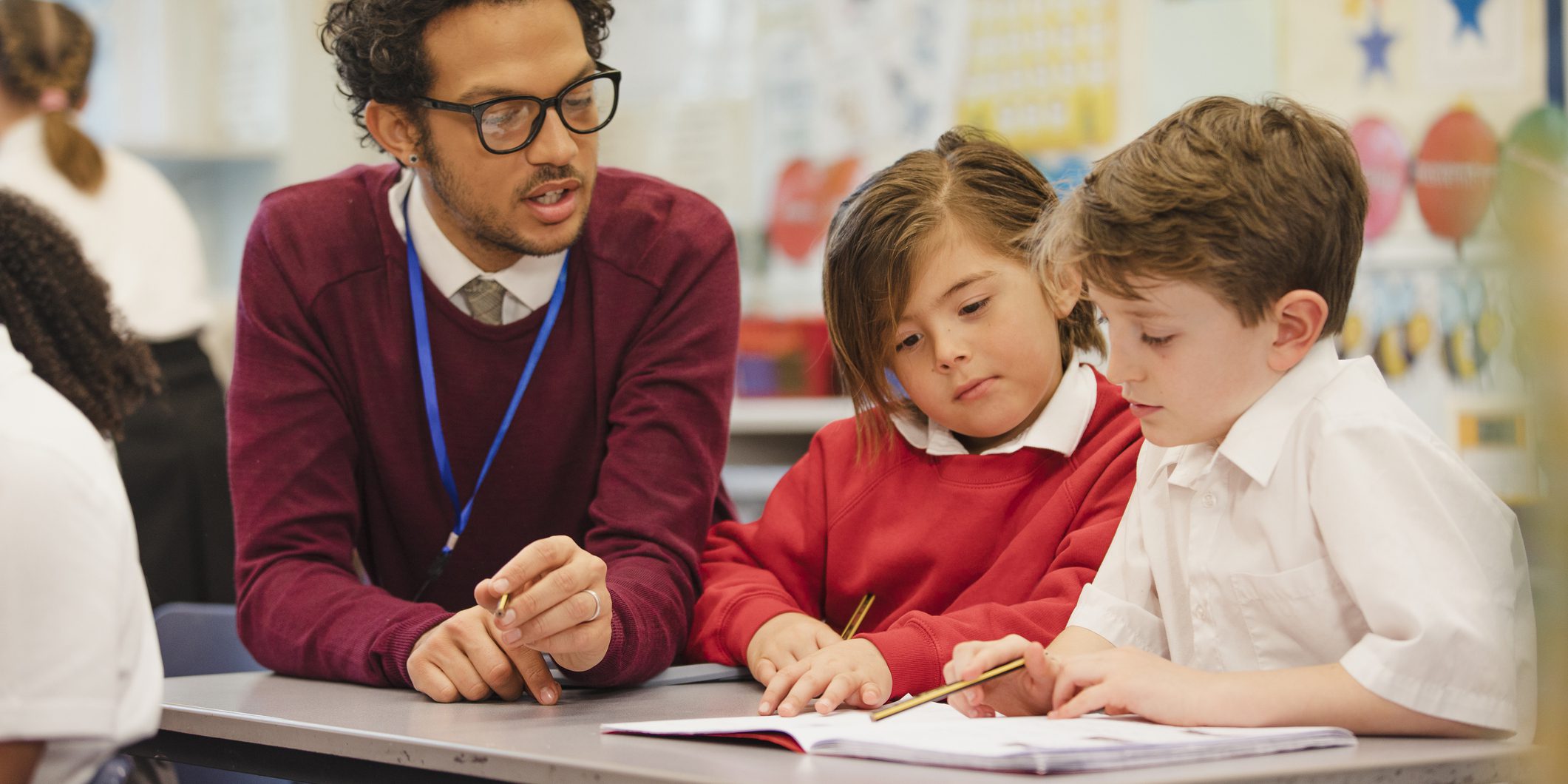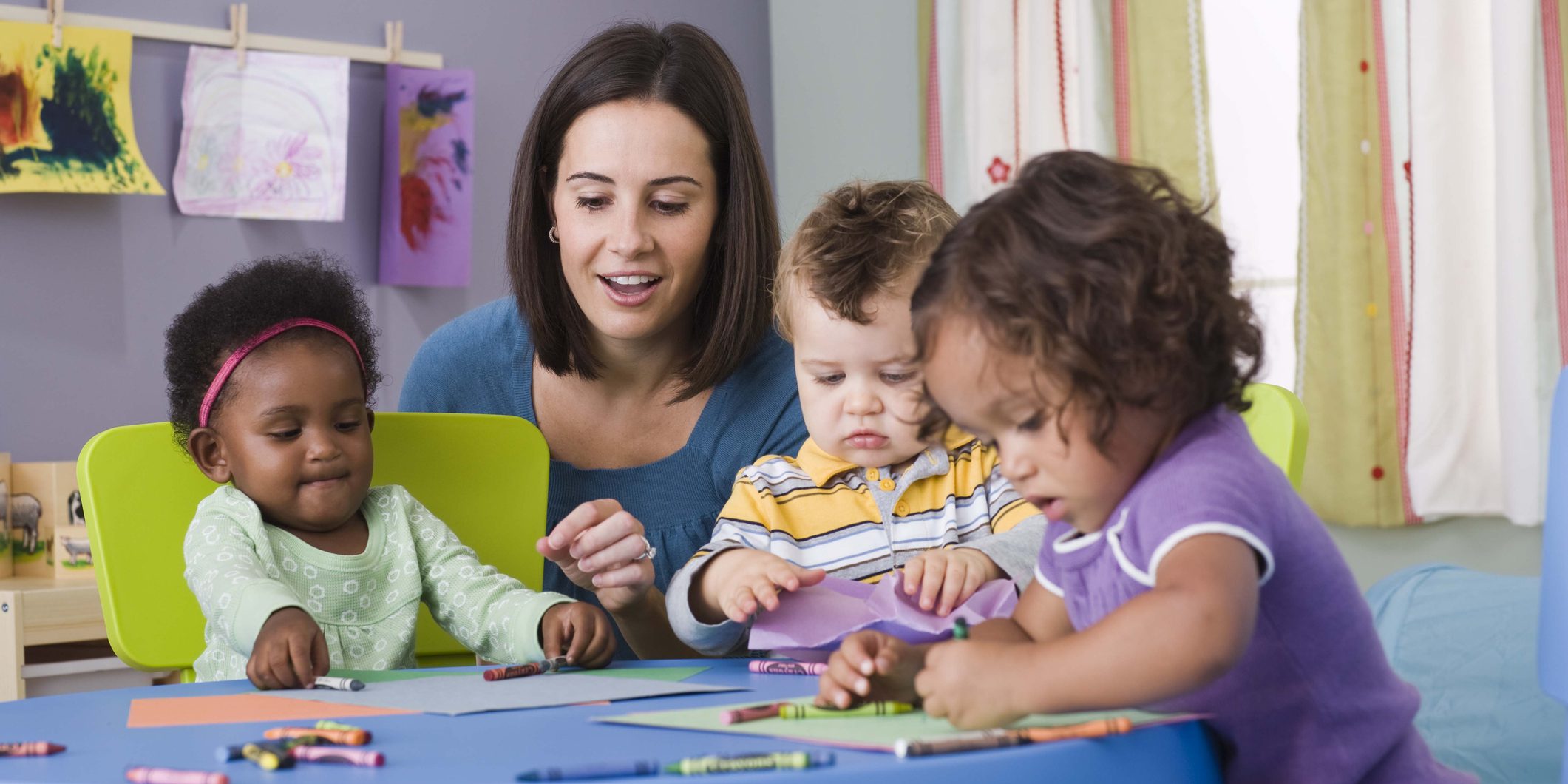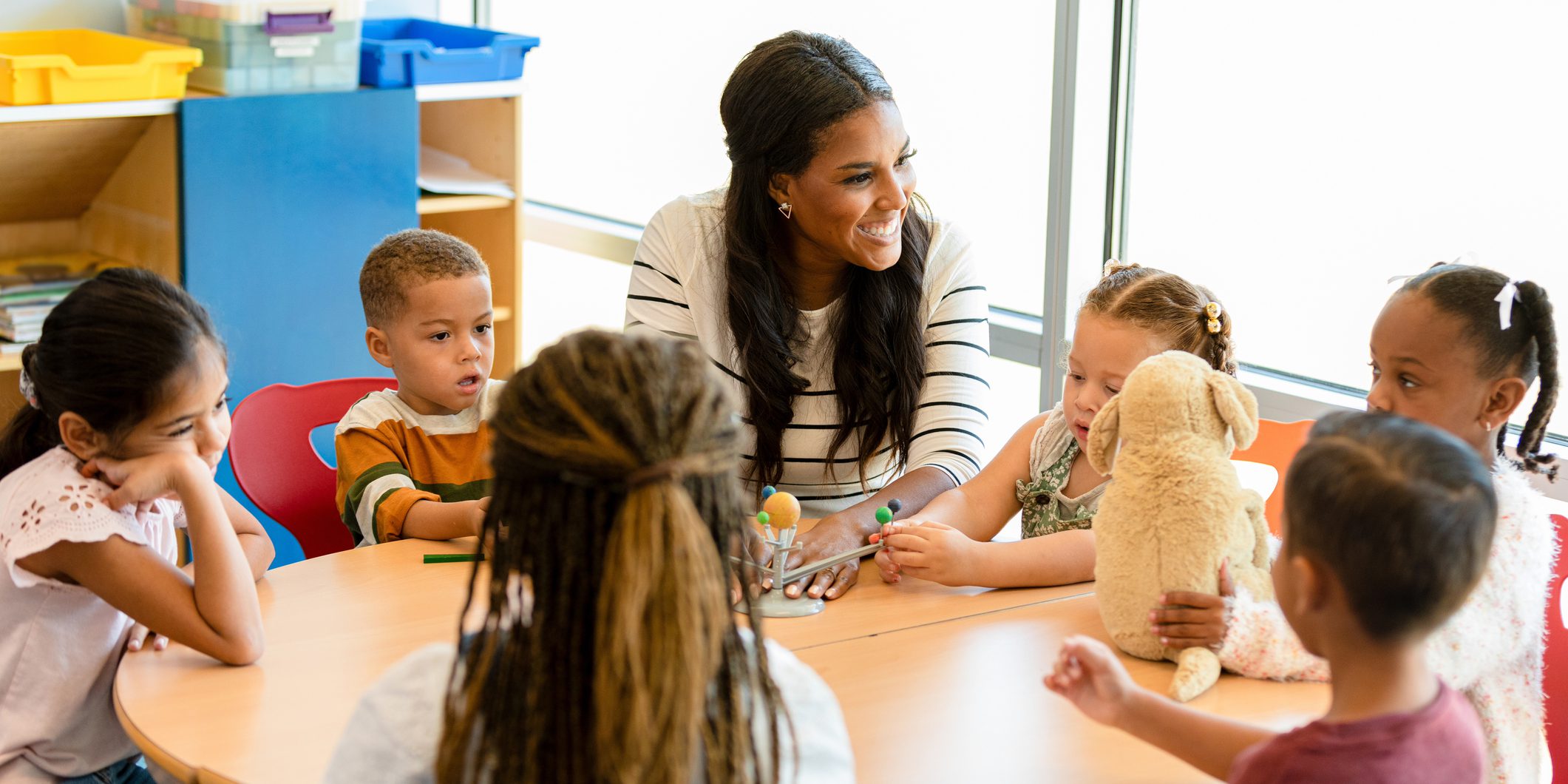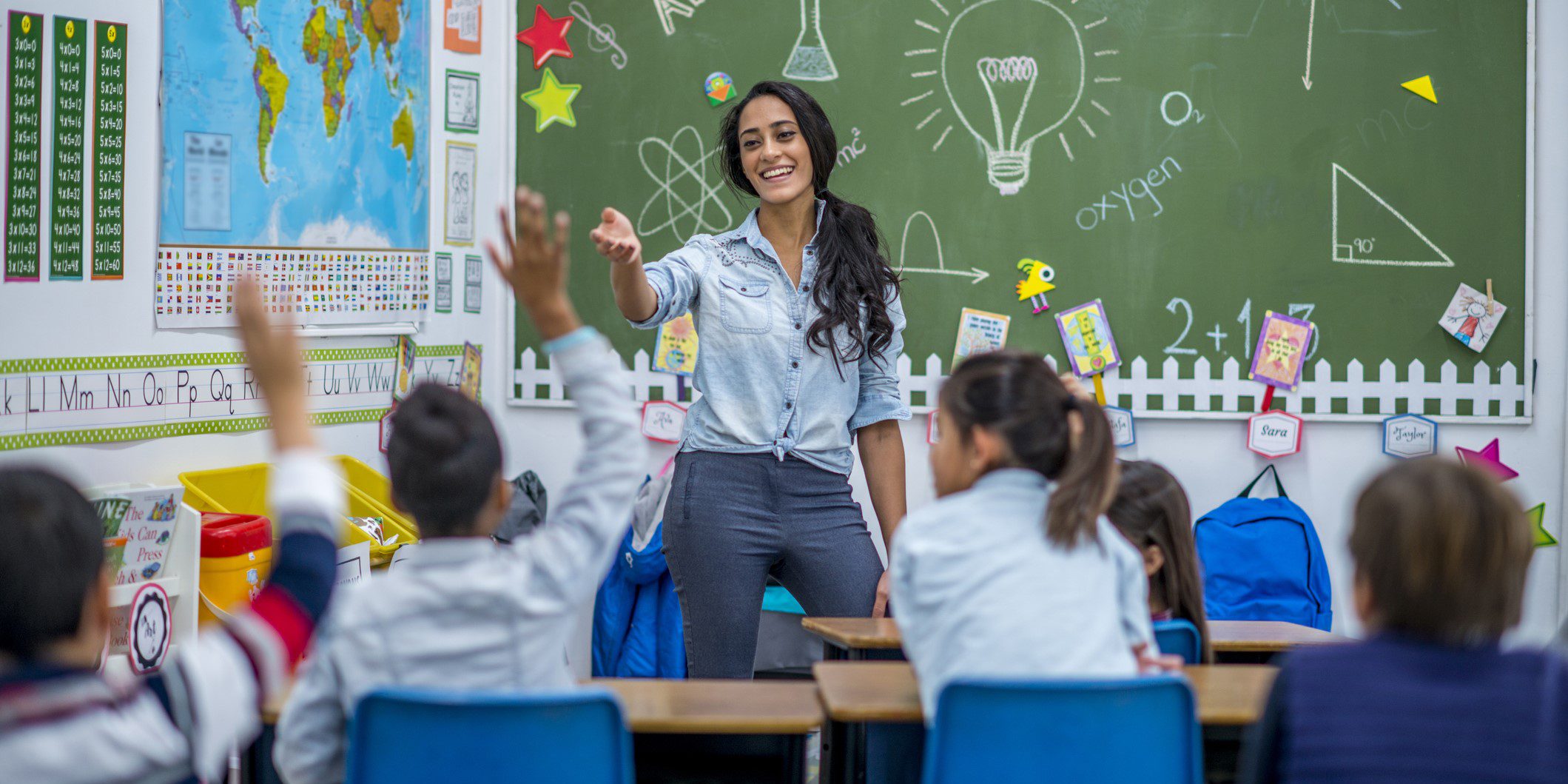This measure assesses the teacher’s ability to initiate a rich conversation about a child’s interests and use open-ended questions (if age-appropriate) to elicit more elaborate responses. The conversation (vocalization/gestures with infants and toddlers) should involve at least three to five exchanges between the teacher and the child. Rich conversations include critical and creative questioning and statements by the teacher to elicit meaningful and open-ended responses. Simple yes or no responses by the teacher are not considered rich conversations.
Category: Category 2: Teacher-Child Interactions
Subcategory: Language Facilitation and Support
Examples
In this section you will find videos, images, and/or documents that can be used to better understand this measure. These examples can also be used in conversations between mentors, directors, and/or teachers to discuss how the program's current practices compare to these examples.
Video Example
In this video exemplar, the teachers initiate a conversation based on a child’s interest and then they pause for the child to have a chance to respond. Teachers can engage in one-on-one conversations by asking questions about a child’s interest and allowing the child the opportunity to respond as their turn.
Age(s): Infant, Toddler, Preschool, School-age
Activity
In this activity, toddlers will identify people and activities in a personal photo book. Teachers can engage individual children in conversations about the photos by responding to the child’s interests or by asking open-ended questions about the pictures. At least one person in the conversation should get three turns to talk.
Age(s): Toddler
Video Example
When the teacher stopped reading to describe what it means to slurp, she initiated a conversation with the children by asking them which liquids could they slurp. Teachers can engage in conversations by asking open-ended questions and allowing children to respond before asking a follow-up question or moving on to another topic.
Age(s): Preschool
Video Example
In this video exemplar, the teacher initiates a conversation with the children by asking them what animals they may see on a farm. Teachers can engage in back-and-forth conversations by asking children open-ended questions and them allowing then to respond before asking a follow-up question or moving on to another topic.
Age(s): Preschool
Video Example
In this video exemplar, the teacher shows a picture of children building a sand castle on a beach. She then asks the children how they would build a sand castle and how they would use a shovel. Teachers can engage in back-and-forth conversations by asking open-ended questions and then allowing them to respond before asking a follow-up question or moving on to another topic.
Age(s): Preschool
Video Example
While reading the book, the teacher asks the children several open-ended questions about the bear in the story. Teachers can engage in back-and-forth conversations by asking a variety of questions and then allowing children time to respond before asking a follow-up question or moving on to another topic.
Age(s): Preschool
Video Example
While playing in the dramatic play center, the teacher asks the children questions about tea and popcorn. Teachers can engage in back-and-forth conversations by asking open-ended questions and then allowing children time to respond before asking a follow-up question or moving on to another topic.
Age(s): Preschool
Video Example
While reading the book, the teacher asks the children questions about the badger in the story. Teachers can engage in back-and-forth conversations by asking a variety of questions and then allowing children time to respond before asking a follow-up question or moving on to another topic.
Age(s): Preschool
Video Example
While reading the book, the teachers asks the children questions about the bear in the story. Teachers can engage in back-and-forth conversations by asking a variety of questions and then allowing children time to respond before asking a follow-up question or moving on to another topic.
Age(s): Preschool
Video Example
In this video exemplar, the teacher asks the children what items they may need for school. Teachers can engage in back-and-forth conversations by asking a variety of questions and then allowing children time to respond before asking a follow-up question or moving on to another topic.
Age(s): Preschool
Practice Opportunities
These resources include tips, strategies, activities, or specific tools related to this measure that programs can put into practice.
Activity
This publication provides teachers a few ideas to build toddlers’ conversational skills, such as noticing children’s signals and asking them questions. Teachers can have meaningful and back-and-forth conversations with children by asking open-ended questions and then allowing children time to respond.
Age(s): Toddler
Publication
This guide illustrates 10 practices teachers can use to promote turn-taking and back-and-forth vocalizations in conversations. One of the strategies mentioned is responding to young children’s verbal and nonverbal communication with words. Teachers can initiate one-on-one conversations and can encourage back-and-forth vocalizations by asking multiple questions about a child’s interests.
Age(s): Infant, Toddler, Preschool
Publication
This publication includes tips, such as asking a variety of questions, for teachers to enrich the environment with language for infants and toddlers. Teachers can engage in meaningful conversations with young children by asking open-ended questions and then allowing children time to respond.
Age(s): Infant, Toddler
Publication
This publication includes tips, such as asking questions related to children’s experiences and interests, for teachers to enrich the environment with language for preschool children. Teachers can engage in meaningful conversations with young children by asking open-ended questions and then allowing children time to respond.
Age(s): Infant, Toddler, Preschool
Activity
Teachers will encourage individual children to pretend to have a conversation on the phone in this activity. Caregivers can reply to a baby’s babbles, and then pause to encourage the baby to continue “talking.” Practitioners can initiate and model conversations with toddlers by asking open-ended questions and waiting for a response. At least one person in the conversation should get three turns to talk.
Age(s): Infant, Toddler
Publication
This publication from PennState Extension provides some examples of thoughtful questions and phrases teachers can use to engage children in conversations. Teachers can have meaningful and rich conversations with children by asking a variety of questions and prompts and then allowing children time to respond.
Age(s): Infant, Toddler, Preschool, School-age
Activity
As children share their opinions about books, teachers can offer commentary and ask questions to encourage back-and-forth conversations. Though children talk in small groups in this activity, teachers can engage individual children in extended conversations about their ideas. At least one person in the conversation should get three turns to talk.
Age(s): Preschool






